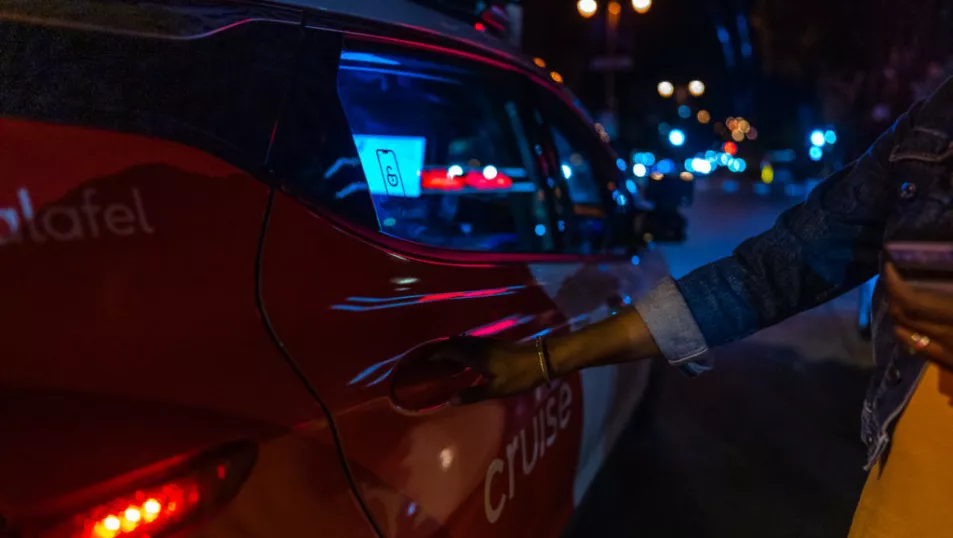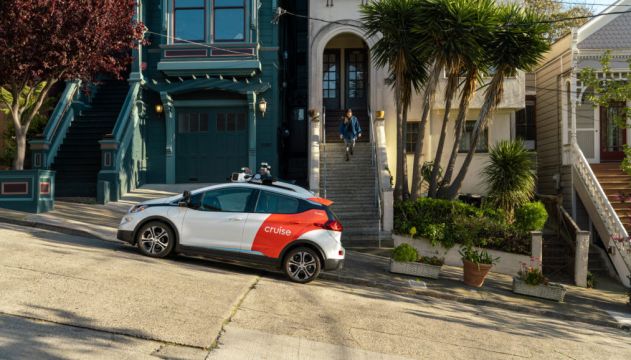It was probably inevitable. Leave two people, late at night and on their way home in the back of a cab, and there’s a pretty good chance some naughtiness will be involved.
If there’s a taxi driver up front, eyeing up the loving couple in the rear-view, that naughtiness is probably going to be fairly limited in its extent. But what if there’s no driver? What if the couple in question is truly alone?
According to The San Francisco Standard newspaper, the answer is simple; they’re going to have sex. The paper tells the story of one couple — anonymously retitled Megan and Alex — who not only decided to have sex in the back of a car operated by Cruise, General Motors’ experimental autonomous taxi service, they deliberately got into the car with love-making in mind.
Megan wore only a dressing gown, it seems, while Alex claims he’s had sex in the back of robo-taxis at least three times. “I mean, there's no one to tell you, ‘You can't do that,’” he told the Standard.
San Francisco has become a hot-bed (pun very much intended) of autonomous car research and testing thanks to its proximity to Silicon Valley.
As well as Cruise, Google’s robo-taxi arm Waymo is testing cars in San Fran, although The Standard claims it’s had no reports of late-night back-seat action from any Waymo users. Maybe GM is just more permissive than Google?
One thing the romantic passengers may not have considered is that while there are numerous cameras and sensors outside the car, to help it navigate the streets of San Francisco, there are also security cameras on the inside, which are capable — in the event of an emergency — of also recording sound. Only exhibitionists need apply.
Prurient as it may be, this has all been predicted. In 2019, the Annals of Tourism Research published a paper by Scott Cohen and Debbie Hopkins (respectively from the University of Sussex and Oxford University) that foretold a rise in adventurous mobile sex in line with increasing numbers of autonomous cars on our roads.

“While [autonomous vehicles] will likely be monitored to deter passengers having sex or using drugs in them, and to prevent violence, such surveillance may be rapidly overcome, disabled or removed,” the study said. “Private [autonomous vehicles] may also be put to commercial use, as it is just a small leap to imagine Amsterdam’s Red Light District ‘on the move.’”
All of which has a rather pleasantly amusing Carry-On feeling to it, but there are more serious concerns being raised about autonomous vehicles, both in terms of direct safety and in terms of their broader impact on traffic and public transport.
Accidents
Cruise, for example, has been ordered by the California Department of Motor Vehicles to cut its on-street fleet in half, following a spate of accidents involving its robotic cars, including two in one night.
“Cruise has agreed to a 50 percent reduction and will have no more than 50 driverless vehicles in operation during the day and 150 driverless vehicles in operation at night,” the California Department of Motor Vehicles said in a statement.
“The DMV reserves the right, following the investigation of the facts, to suspend or revoke testing and/or deployment permits if there is determined to be an unreasonable risk to public safety.”
Cruise, in its defence, points out that in one accident the robo-taxi was struck by another vehicle which had run a red light. Another accident was more serious — the Cruise vehicle failed to notice a stopped fire engine and struck it.
“Our primary concern is the rider and their welfare, and we have reached out to offer support,” said Cruise. “We are also deeply mindful of the well-being of the first responders and any individuals affected by this incident.”
In a separate incident, a Cruise vehicle drove into a patch of wet cement and became stuck, thus proving that while sensor and camera technology has come a long way, there’s still a gap between it and basic human common sense.

On another occasion, a whole group of Cruise vehicles ground to a halt, triggering a significant traffic jam, because they lost their wireless communication signal.
It turned out that a local music festival had been eating into the available wireless bandwidth, rendering the cars impotent.
More seriously, a robo-taxi being operated by Waymo apparently struck and killed a dog, in spite of the car’s sensors having detected the animal. The company later stated that even emergency braking would not have prevented the incident.
While these might be dismissed as teething issues, things for sensor and software developers to work their way around, there is a more serious debate emerging in autonomous vehicle circles, and that’s whether they will spell the death-knell for public transport.
The likes of Elon Musk has come in for severe criticism for his championing of autonomous vehicle technology at the potential expense of public transport initiatives, while others are concerned that self-driving cars will do little to alleviate the issues of congestion.
'Shared mobility'
Professor Graham Currie of Monash University in Australia told The Australian Academy of Technology and Engineering that: “My concern with ‘shared mobility’ like Uber, bike share or car share is the use of the word ‘shared’. It implies efficiency in urban travel since people can travel together in congested cities.
"But these ‘shared’ mobility modes don’t involve shared occupancy at all – the average Uber occupancy in traffic is 1.6 including the driver; so 40 per cent of the time they have no passengers and are adding to traffic congestion for no good reason. They also have to prove they can help make cities better. I think they have a likely potential to increase urban traffic congestion and I can’t see why we would permit that when traffic has been eroding city liveability.”
“I think it’s definitely the case that, with autonomous cars, we’d just end up with worse congestion,” Dr Brian Caulfield, associate professor, and head of department at the Centre for Transport Research, part of Trinity College, Dublin told breakingnews.ie.
Commuters
“If people thought that they could live in, say, Kilkenny and commute to Dublin in their sleep well then we’d just end up with ever-more urban sprawl, much worse than what we have now. Also, the benefits of autonomous cars in terms of congestion and emissions only really come into play when every single car on the road is autonomous. Before that happens, the benefits just don’t accrue.
“I think autonomous tech is great in the sense of having more sensors on vehicles to improve safety and so on, but the idea of just sitting into a couch which effectively drives itself around?
"I don’t think that’s a great idea and I do think people would end up leaving public transport and opting for one of these pods. I think that the effort being put into these autonomous cars would be better expended on making electric car batteries better, or on making roads safer. I just don’t think they’re a good idea. It’s a bit of a Pandora’s Box and we’ve bigger problems in transport than just making it easier to drive around.”







